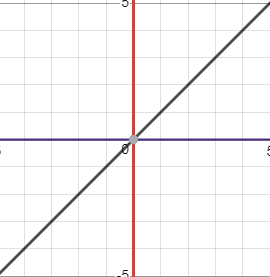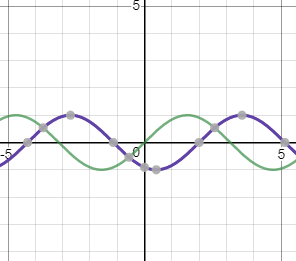
What is meant by phase angle?
Answer
139.5k+ views
Hint: Here, we have to understand the meaning of the term phase angle. In basic Physics, phase angle is used in terms of firstly, wave motion and secondly, for describing alternating current and voltage. We will discuss in terms of both the concepts. Basically, it represents angular shifts or displacements corresponding to two points having the same value along the y-axis.
Complete step by step solution:
Graphically understanding, phase angle is the angular displacement of a point on a sinusoidal wave from a reference point or time. Both waves and alternating quantities are expressed in the form of waves. So, the term is used in both ways.
In electrical quantities, alternating current as voltage are expressed as sinusoids. In waves, amplitude, velocity and acceleration of particles have alternating values and hence are expressed as sinusoids.
In an electrical circuit, we can recognize angle between resistive current and total current on phasor diagram as current phase angle(Φ)

The difference in two quantities have the same frequency and two corresponding points attain maximum value or zero value at two different instants, then the angle between two alternating quantities is called difference of phase angles. Below is the explanation of phase angle in terms of waves.

ΔΦ represents phase difference
For the purple graph, ΔΦ is the phase angle.
Note: Phase angle for any quantitative angle can be defined as the angle at the instant at which it attains zero value measured taking origin as reference. It can also be defined as the angle between total current and resistive current in an electrical circuit. If the phase angle in any phasor diagram is counter clockwise, it is taken as positive and negative for clockwise direction.
Complete step by step solution:
Graphically understanding, phase angle is the angular displacement of a point on a sinusoidal wave from a reference point or time. Both waves and alternating quantities are expressed in the form of waves. So, the term is used in both ways.
In electrical quantities, alternating current as voltage are expressed as sinusoids. In waves, amplitude, velocity and acceleration of particles have alternating values and hence are expressed as sinusoids.
In an electrical circuit, we can recognize angle between resistive current and total current on phasor diagram as current phase angle(Φ)

The difference in two quantities have the same frequency and two corresponding points attain maximum value or zero value at two different instants, then the angle between two alternating quantities is called difference of phase angles. Below is the explanation of phase angle in terms of waves.

ΔΦ represents phase difference
For the purple graph, ΔΦ is the phase angle.
Note: Phase angle for any quantitative angle can be defined as the angle at the instant at which it attains zero value measured taking origin as reference. It can also be defined as the angle between total current and resistive current in an electrical circuit. If the phase angle in any phasor diagram is counter clockwise, it is taken as positive and negative for clockwise direction.
Latest Vedantu courses for you
Grade 11 Science PCM | CBSE | SCHOOL | English
CBSE (2025-26)
School Full course for CBSE students
₹41,848 per year
EMI starts from ₹3,487.34 per month
Recently Updated Pages
JEE Main Participating Colleges 2024 - A Complete List of Top Colleges

JEE Main Maths Paper Pattern 2025 – Marking, Sections & Tips

Sign up for JEE Main 2025 Live Classes - Vedantu

JEE Main 2025 Helpline Numbers - Center Contact, Phone Number, Address

JEE Main Course 2025 - Important Updates and Details

JEE Main 2025 Session 2 Form Correction (Closed) – What Can Be Edited

Trending doubts
JEE Main 2025 Session 2: Application Form (Out), Exam Dates (Released), Eligibility, & More

JEE Main 2025: Derivation of Equation of Trajectory in Physics

A point charge + 20mu C is at a distance 6cm directly class 12 physics JEE_Main

JEE Main Exam Marking Scheme: Detailed Breakdown of Marks and Negative Marking

Learn About Angle Of Deviation In Prism: JEE Main Physics 2025

Electric Field Due to Uniformly Charged Ring for JEE Main 2025 - Formula and Derivation

Other Pages
JEE Advanced Marks vs Ranks 2025: Understanding Category-wise Qualifying Marks and Previous Year Cut-offs

JEE Main 2025: Conversion of Galvanometer Into Ammeter And Voltmeter in Physics

Degree of Dissociation and Its Formula With Solved Example for JEE

Electric field due to uniformly charged sphere class 12 physics JEE_Main

Dual Nature of Radiation and Matter Class 12 Notes: CBSE Physics Chapter 11

Formula for number of images formed by two plane mirrors class 12 physics JEE_Main




